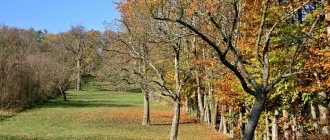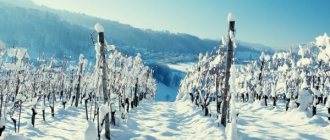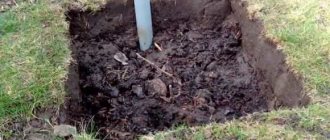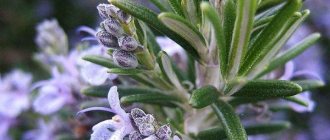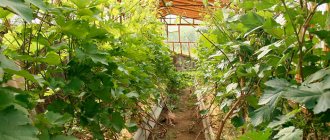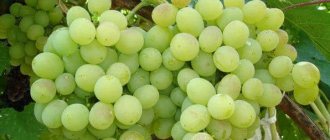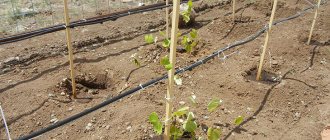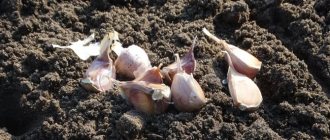Fruits and berries » Grapes
0
1068
Article rating
Kira Stoletova
Grapes are a heat-loving plant that prefers the southern sun and does not tolerate cold. Special varieties have been bred for regions with cold climates, but they also require special care. Every winegrower should know how to cover grapes for the winter in Siberia in order to get a high-quality harvest in the spring.
Rules for covering grapes for the winter in Siberia
Features of the climate of Siberia
In Western Siberia the climate is sharply continental, and the weather conditions in the eastern part of Siberia are influenced by the relief features. Winters in the macroregion are long and frosty, and summers are short. But such conditions also have advantages for gardening. The grapes are resistant to pests and are not susceptible to diseases. In Siberian conditions, it is not affected by the dangerous phylloxera aphid.
Despite the climate, early and some mid-season varieties grow successfully and produce a harvest, provided that the vine is covered and protected from freezing.
Timing for covering grape bushes in Siberia
Siberian autumn takes a short period of time, no more than two months, and quickly turns into a harsh, long winter. For this reason, they begin to cover the grapes at the end of September - beginning of October in order to catch them before the first frost. But there's no need to rush.
You can remove the vine from the trellis earlier, but it is better to wait until the leaves fall and do not pick them off yourself. At this time, complex biochemical processes take place in the vine for the complete ripening of shoots and buds.
At what temperature should you cover grapes?
There is no need to wrap the entire bush at once. Temperature changes can cause condensation to form and dampen the plant. A period is needed when the fluctuations in sub-zero temperatures pass - before the snow falls. It is useful to harden the plant at -5...-8°C. Finally, the grapes can be covered at a constant temperature below -10°C.
Reference. In Siberia, the covering of grapes is completed by mid-October.
Why are Siberian grapes covered for the winter?
Grapes love warmth. Siberian varieties, of course, are adapted to short summers and winters, but they cannot tolerate 30-40° frost without shelter.
Reasons why you need to cover grapes until spring:
- After harvesting, the buds go to sleep. At rest, they withstand frost for 3 days, then die.
- The root system of grapes is fibrous. If the ground freezes to -20°C, the roots die irrevocably.
- The culture is afraid of temperature changes. Returning spring frosts are especially dangerous. When they retreat, the juice begins to flow and the eyes come to life. Sub-zero, even slight temperatures, destroy them. Young plants suffer the most from spring changes.
Siberian grapes
Therefore, the bushes are covered in winter. This even applies to the record holder for frost resistance of the Amursky variety.
How to prepare grapes for shelter in Siberia
Preparing the bush for winter begins in September immediately after harvesting. It includes pruning, watering, fertilizing. The growth of the vine and next year’s harvest depend on how the plant overwinters.
Trimming
Pruning makes it easier to cover the vines. The best time for the procedure is mid-September, but at least 1-2 weeks after harvest, so that the plant has time to recover. If by that time the bush has not dropped its leaves, they are shaken off by hand. If you prune before leaf fall, the vine will lose its plasticity. Such branches will break when placed in a trench.
Trim the vine down to living wood - its cut should be light green. 1-2 cm of shoot are left above the living bud. After pruning, a certain number of buds should remain on each fruit branch, depending on the thickness of the shoot:
- 5 mm - 5 pcs.;
- 6 mm - 5-6 pcs.;
- 7 mm - 7-8 pcs.;
- 8 mm - 8-9 pcs.;
- 9 mm - 9-11 pcs.;
- 10 mm - 11-13 pcs.;
- 11 mm - 12-14 pcs.;
- 12 mm - 13-15 pcs.
30% of spare eyes are left on the plant in case of freezing.
Important! Fruit-bearing shoots are shortened by 60-90%.
Watering
The frequency and abundance of moisture depends on the composition of the soil. Sandy substrate requires frequent but moderate watering. Clay soil is watered rarely and abundantly. After harvesting, watering can be stopped for a while. This imitation of drought will accelerate the ripening and lignification of the vine, and the grapes will overwinter better.
Moisture-recharging irrigation is carried out at the end of September, on the last sunny days. After it, the lashes will be saturated with moisture, become flexible, and will be easy to bend to the ground. For fruit-bearing plants, the norm is 100-150 liters per 1 square meter. m landings.
Top dressing
During the growing season, the plant uses up its entire supply of nutrients. To set the buds of the future harvest, it is necessary to fertilize it:
- Spill the soil with a solution of phosphorus and potassium fertilizers (20 g and 10 g per 10 liters of water).
- Once every three years, the following composition is applied to the bush: 1 kg of chernozem, 30 g of superphosphate, 30 g of potassium fertilizer.
- You can add boric acid, potassium permanganate, iodine and zinc sulfate to water for irrigation, but not more than 15 g of each substance per 10 liters of water.
Before winter, grapes should not be fed with nitrogen-containing mineral compounds, which cause rapid growth of green mass.
Treatment against diseases and pests
Fungal spores found on bark and foliage survive at sub-zero temperatures. To prevent their re-spread, it is necessary to carry out preventive spraying with 1% copper sulfate. In the fight against oidium and mites, the drugs “Nitrophen” and “DNOC” are suitable.
Disinfection of covering material
Non-woven material does not need to be disinfected. But it’s better to process the natural one:
- Dry leaves. It is raked around the trunk and treated with fungicides (Maxim, Oksikhom, Fundazol) or Bordeaux mixture against spores of pathogenic fungi.
- Straw. Herbs are added to it to repel rodents. This is wormwood, marigold, tansy.
- Spruce branches themselves have disinfecting properties.
- Wooden flooring, mats, straw mats are treated with a solution of copper sulfate in a proportion of 10 g per 1 liter of water.
Covering methods
How to cover grapes for the winter in Siberia? There are many types of shelter. Each gardener decides for himself which method to use. Slate, cardboard, natural materials, and snow are used for shelter.
The influence of climate on the choice of method
In regions with a changeable climate, where winter is accompanied by thaws and rains, air-dry shelters are made for grapes. Guaranteed protection against freezing, getting wet and icing is provided by the tunnel method. In regions where there is little snow, it will not be possible to use a shelter made of snow and earth.
Near-standard instillation
This type of shelter is used for young plants. A vine older than a year cannot be covered in this way. The branches of the vine are fastened together and bent. The standard is buried in a layer of earth 20-25 cm high.
Half cover
This method is used for frost-resistant varieties in the harsh conditions of Siberia.
Procedure:
- Remove the vine from the support.
- Lay on the ground.
- Cover with agrofibre.
Full Cover
Used for young plants and regions where winter temperatures drop to -20°C. They use earth and snow for protection.
Snow
Snow acts as a natural insulator that protects bushes from freezing. The vine is bent to the ground, the hole is covered with earth, and then covered with snow. Every centimeter of snow provides one degree of heat to the plant.
Earth
The oldest and most reliable method. A trench is dug along the row using a shovel, tied vines are placed and covered with an earthen mound 15-20 cm high.
This method has a drawback: the plant can sap, since there are no vents.
Straw or reed
This method refers to the trench method. Dig a trench along the plantings, lay the vines tied in a bunch, and cover the top with straw or reeds.
The method is not very suitable for winter shelter in Siberia, as it may attract mice.
Leafy
The foliage is collected around the bush and placed on top of the vine, 30-35 cm thick, thereby protecting the roots from freezing. But first it must be treated with fungicides, for example, “Fundazol”, “Oxychom” or Bordeaux mixture. A film is stretched over the layer of leaves.
Needles
This is not the best insulation. The needles get wet, freeze, preventing the vine from breathing, and provide poor insulation.
Other materials
Instead of pine litter, it is better to use spruce branches. Coniferous branches allow air to pass through well, disinfect and repel rodents.
Sawdust is also used, but it must be covered with film. This is not a very good option, as the material attracts mice.
Important! Calcium carbide is placed under winter shelters, which repels rodents.
Dry shelter
The safest and most common way. The vine is also bent to the ground, but it is laid on non-woven material or any dry organic matter. This allows the vine to not come into contact with the ground and remain dry. The insulation is pulled over the top, leaving an air gap between the plant and the shelter.
Slate
Slate prevents precipitation from entering the vineyard. A film or agrofibre is laid under the vine and insulated with spruce branches on top. The entire structure is covered with slate.
Film
The material is pulled over metal arcs. It turns out to be a low greenhouse. Cardboard or planks covered with spruce branches or straw are laid under the vine.
Ruberoid
Roofing material is used in the same way as film, or combined with wooden panels. Wooden shields are installed over the laid grapes and covered with roofing felt on top. The design resembles a gable roof of a house. Secure with sprinkled earth.
Boxes
The boxes are used in the same way as roofing felt, or they are attached to metal arches, like a film.
Other materials
You can use polystyrene foam. The bush is insulated with pine needles, covered with pieces of foam plastic and wrapped in polyethylene. In the spring, the polystyrene foam is removed, and the pine needles are left as mulch.
You can wrap adult plants with several layers of agrofibre and secure with twine. A layer of snow is well retained on its surface.
Which method is preferable in Siberia
In Siberia, they prefer the dry method of covering using available materials. Dig a trench or install greenhouses. When preparing for winter, much attention is paid to the root system. The trunk circle is covered with spruce branches.
What to do in spring
In the spring, as the snow melts, the insulating structure can be dismantled. In the first days of a steady thaw, the snow-retaining devices are removed, and after the snow has completely melted, the waterproofing layer can also be removed. The main shelter is removed only at the end of the second half of April, after which the vine can be lifted from the trench and hung on supports for further ventilation. As soon as the shoots are sufficiently dry, the attachments of the bunches are removed and the branches are placed back in the trenches to be covered again when necessary. Returning frosts are a common occurrence in Siberia, so there is no hope for early warmth.
It will be possible to finally open the grapes and secure them again on the supports no earlier than the middle or even the end of May. In general, caring for vineyards in harsh climates involves performing the same actions as when growing in the rest of Russia, albeit with a slight shift in the usual timing. Having properly prepared the vine for wintering, you don’t have to worry about its safety until the new season, which means you won’t have to doubt the abundance of the future harvest.
Common Mistakes
Failure to comply with the deadlines and technology for preparing for winter can destroy the grapes:
- Early cover . The vine needs to be given time to harden, so it will better survive the winter. First, make a temporary shelter, and when a stable temperature is below -10°C, you can wrap the bushes.
- Contact with the ground. In Siberia, it is better to use the dry method, when a layer of spruce branches, leaves or non-woven material is laid under the laid vine. This way the vine has a better chance of not resisting.
- Hasty release from protection in the spring. Don't rush to get rid of the covering material. Return frosts are dangerous for young buds. Release the grapes when the snow has completely melted and the temperature has reached above zero.
Why is autumn pruning necessary?
Pruning grapes in autumn in Siberia is an important undertaking. In northern regions it is not advisable to leave pruning until spring
Before sheltering for the winter, the vines are tied into bunches.
In the spring, when the air temperature becomes above zero, a greenhouse effect will begin to form under the waterproof shelter. If the grapes have not been pruned, then unharvested foliage, buds and dead shoots will begin to rot. Since all the branches were collected in one bunch, healthy branches will also be affected by the fungus.
Most often, such a bush dies and is difficult to revive, so you have to grow the grape bushes again or wait a little for the underground buds to awaken.
Autumn pruning allows you to avoid such troubles; besides, after pruning, the bushes take up much less space and are easier to cover. Pruning grapes in Siberia has a number of features; it differs significantly from pruning in the southern regions.
Due to the harsh climate, the vine does not always have time to ripen; to help the plant, pruning is carried out in two stages:
- Lightening pruning.
- Final autumn pruning.
